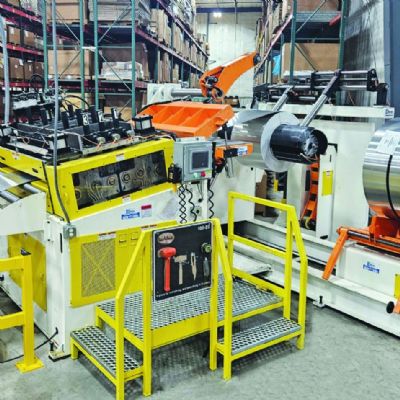Safer and Safer; Better and Better
October 24, 2024Comments
Metal formers and fabricators who excel at safety typically excel at productivity, quality and delivery too.
One of the most encouraging aspects of my interview at Manitowoc Tool and Mfg., featured in “Growth, Diverse Clientele Drive Need for Flexible Feed Line”, p. 36, is the company management’s demonstrable emphasis on employee safety. That dedication to safety is evidenced not only by the safety features that the company specified in its purchase of a new coil-feed line, but also in signs of its safety culture embedded throughout the plant—culminating in a 15-yr. period with only one lost-time accident.
“We don’t have walking wounded at this plant. Safety is just the culture at this facility,” Scott Mertens, CEO, Manitowoc Tool and Mfg., remarks.
The best part: employee safety does not come at the expense of growth and prosperity. The company has grown steadily and profitably, expanding its facility 13 times since its founding. Safety and profit need not be diametrically opposed.
Hazards Fraught; Safety Not
Nothing says you truly care about your employees like prioritizing their safety; nothing screams the reverse than sloppy and negligent safety protocols.
“Accidents happen,” some company leaders shrug, while failing to enforce lockout/tagout, the wearing of personal safety apparel and devices, or decline to invest in available machine safety features while permitting trip hazards. Or, they assign staff untrained in hazardous tasks to perform them, refrain from arming employees with ergonomic aids and ignore unsafe behavior.
I shudder to recall a conversation with a metal-fabrication-company owner who nonchalantly relayed the following story. One of his employees had violated the lockout/tagout rule and the machine pinned him when its stored energy released. He experienced excruciating pain while being crushed by the weight of the machine. A fellow employee ran to a nearby forklift to try to rescue him from the machine. Uncharged, it ran out of battery before he got there.
I know people—some in my own family—who have been injured on the job because of their employer’s lax safety protocols. One, as a machinist apprentice, was tasked with operating a forklift that he had not been trained to operate and fell backwards into a pit. He broke his arm in 17 places. Another family member working in a busy, congested area tripped over a power cord stretched across a corridor that created a trip hazard. She broke her wrist. I know people who have lost fingers and suffered head and back injuries. I’ve read horror stories of employees getting mangled in unsecured machinery. In almost every instance, the so-called accidents were preventable.








